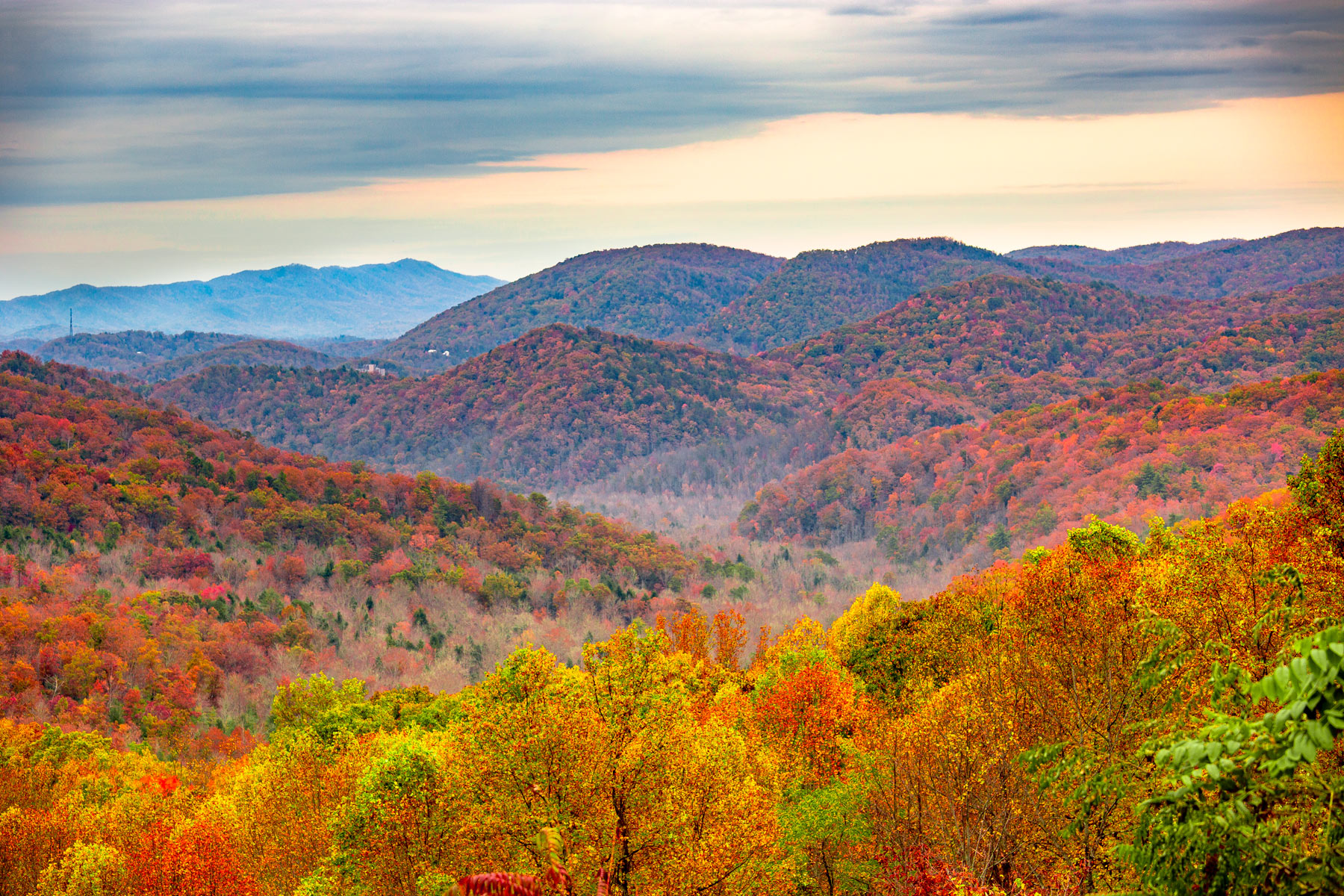
Article Summary: National Parks Near Asheville
National Parks near Asheville. There’s so much more to Asheville than the historic Biltmore Estate.
In this article, we’ll familiarize you with the incredible national parks that are within a day’s drive of downtown Asheville.
There are 10 national park sites for you to see on your next visit to the Tar Heel State.
Nestled in the beautiful Blue Ridge Mountains, Asheville has long been known as the “Paris of the South,” thanks to its vibrant creative community, stunning historic architecture, and rich history.
And there are some amazing national parks within a day’s drive of the city.

So, What Is A National Park?
We get asked that question a lot because there’s a difference between a “national park” and a “national park site.” To help you understand that difference you might want to check out our article titled: What Is A National Park Really?
Now let’s go ahead with 10 reasons why you’ll want to hop in your car and make a day’s drive from Asheville to one of these truly amazing places.
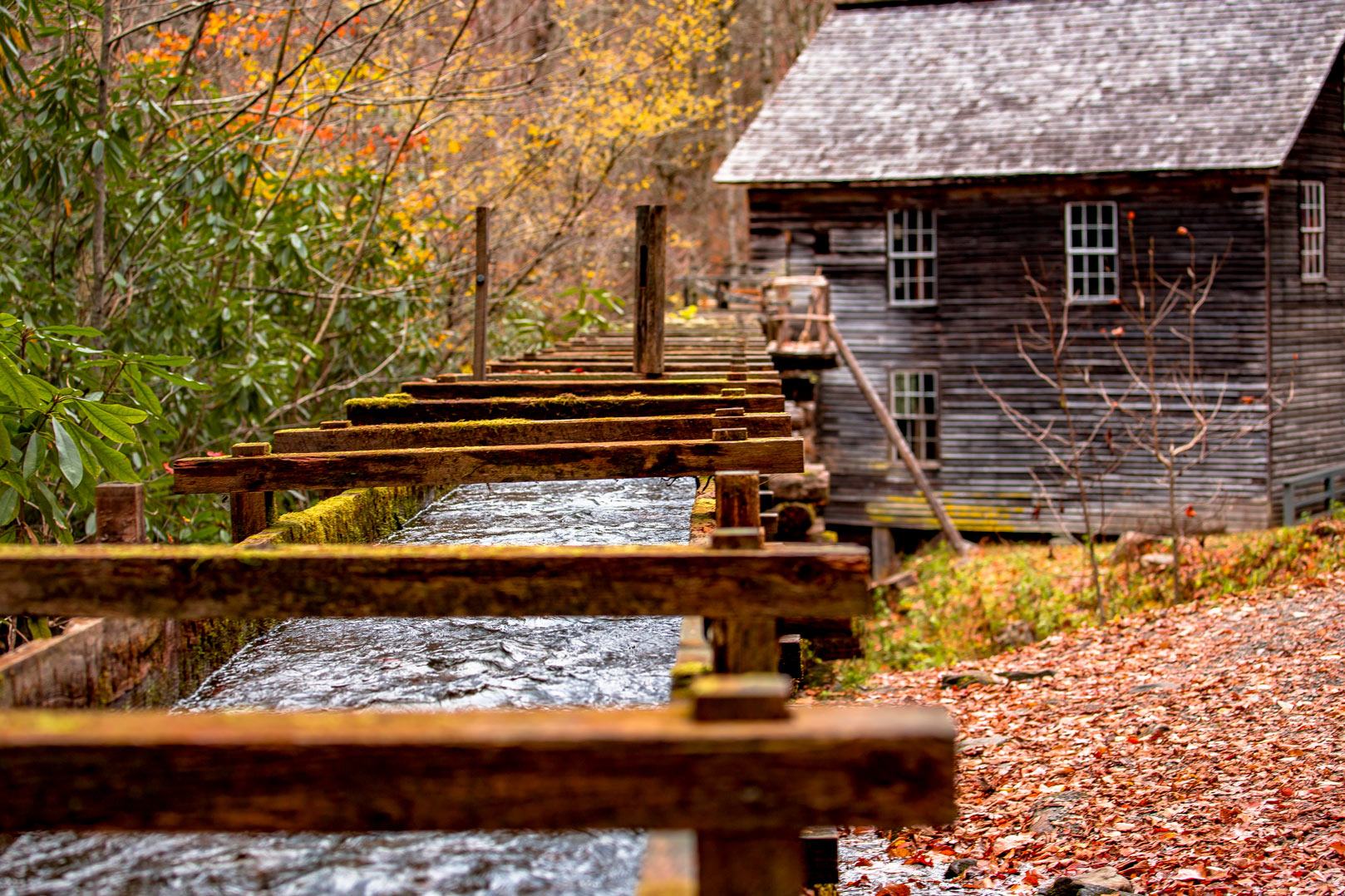
Table Of Contents: National Parks Near Asheville
Best National Parks Near Asheville
1. Appalachian National Scenic Trail
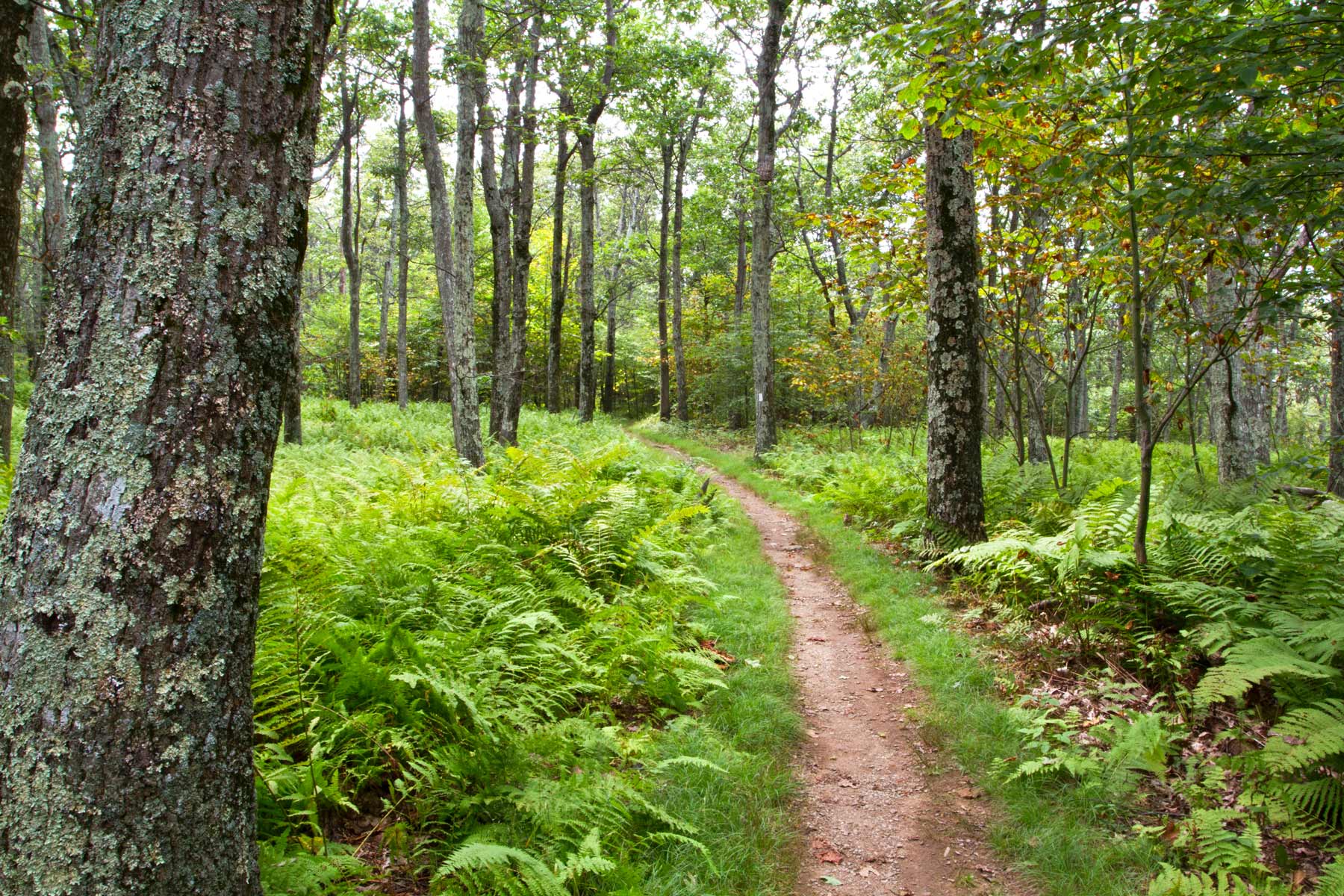
Distance From Asheville: The Appalachian Trail can be accessed at many locations within 45 min to 2 hours of Asheville
The Appalachian National Scenic Trail, also known as the Appalachian Trail or simply the AT, is a long-distance hiking trail that extends over 2,200 miles through the Appalachian Mountains of the eastern United States.
The trail runs from Springer Mountain in Georgia to Mount Katahdin in Maine, passing through 14 states along the way.
The AT was first envisioned in the 1920s, and it was officially designated as a National Scenic Trail by Congress in 1968. Today, the trail is one of the most popular long-distance hikes in the world, with thousands of hikers attempting to hike its entire length each year.
The Trail Passes Through Some Of The Most Scenic & Remote Areas Of The Appalachian Mountains
The trail passes through some of the most scenic and remote areas of the Appalachian Mountains, including dense forests, rolling hills, and high peaks. Along the way, hikers can enjoy stunning views of the surrounding countryside, as well as the opportunity to see a variety of wildlife, including black bears, deer, and eagles.
Hiking the entire length of the AT is a challenging and rewarding experience, and it typically takes 5 to 7 months to complete. However, the trail can also be hiked in sections, and there are many popular day hikes and overnight trips that allow visitors to experience the beauty of the trail without committing to a long-distance hike.
Overall, the Appalachian National Scenic Trail is a true American classic, offering a unique blend of natural beauty, physical challenge, and cultural history. It is a must-visit destination for anyone looking to experience the beauty of the Appalachian Mountains.

2. Blue Ridge Parkway
Distance From Asheville: Two hours 36 minutes (167 miles) via I-40 E & I-77 N.
Believe it or not the Blue Ridge Parkway is the most visited single unit in the U.S. National Parks System. While you can drive through it in only 10-12 hours, if you want to see and do all of the wonderful things available along the way then be prepared to set aside five to seven days.
The Blue Ridge Parkway is a scenic roadway that extends for 469 miles through the Blue Ridge Mountains of Virginia and North Carolina in the United States. The parkway is one of America’s most popular scenic drives, and it is known for its stunning views of the surrounding countryside, including rolling hills, forests, and mountains.
The parkway was first envisioned in the 1930s, and it was constructed over the course of several decades. Today, it is a National Parkway and is managed by the National Park Service.
Along the parkway, visitors can enjoy a variety of recreational opportunities, including hiking, camping, fishing, and picnicking. There are also several scenic overlooks and hiking trails that provide breathtaking views of the surrounding landscape.
One of the highlights of the parkway is the fall foliage, when the trees in the area change color and provide a stunning display of oranges, reds, and yellows. The parkway is also home to a variety of wildlife, including black bears, deer, and eagles.
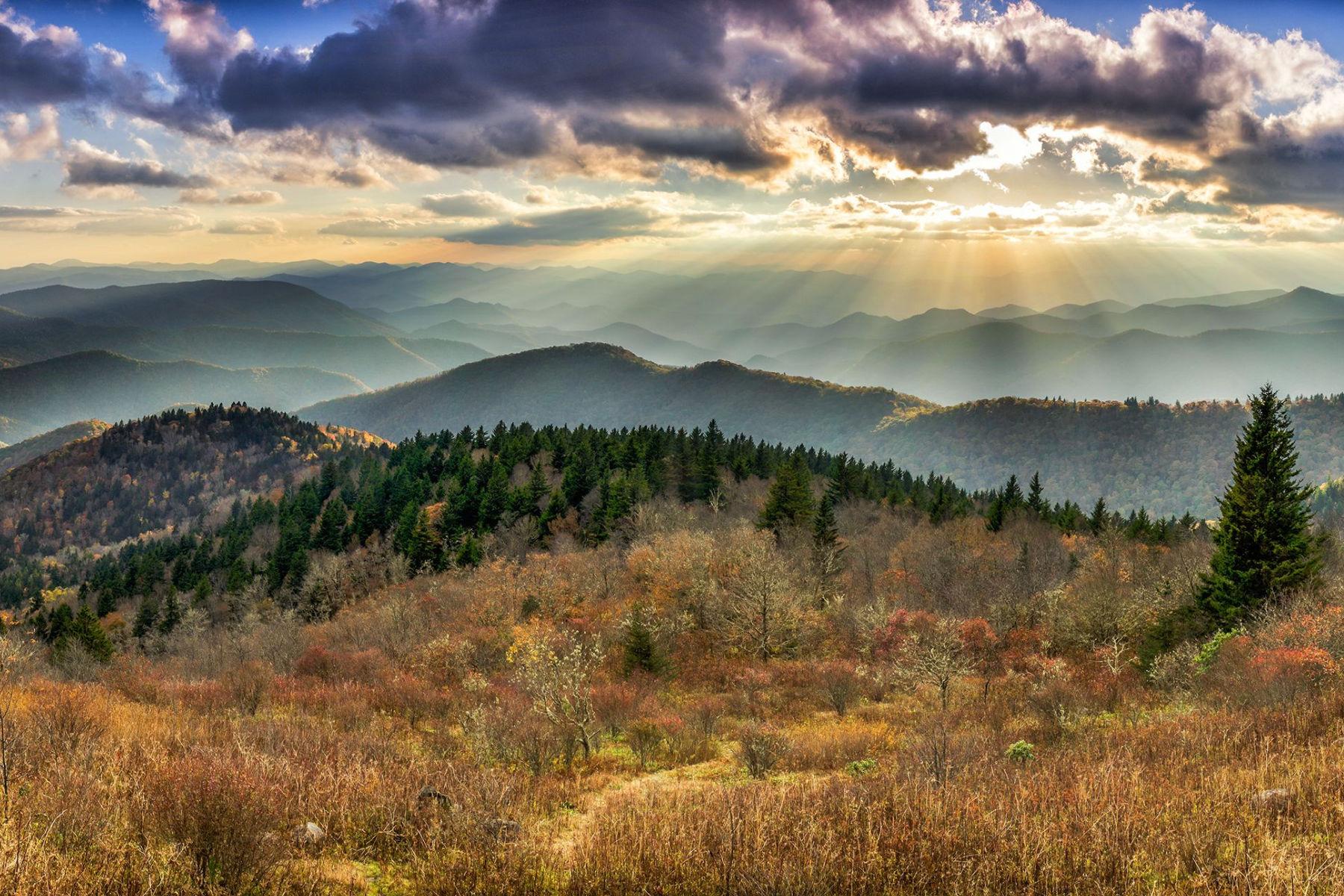
3. Cape Hatteras National Seashore
Distance From Asheville: Seven hours 42 minutes (490 miles) via I-40 E & US-64 E.
It’s a long day’s drive from Asheville, but if you love the seashore then it’s definitely a trip worth making. Why? Because there’s nearly 70 miles of beautiful beach. You can enjoy an ocean swim during the day and a warm beach fire at night. There’s opportunities to fly kites, enjoy a picnic along the seashore, search for sea shells washed ashore, build castles in the sand or just relax.
There are three designated hiking trails which include:
- Buxton Woods Trail-It’s a .75 mile loop where you will see the diverse maritime forest ecosystem up close. You will traverse some of the highest points on Hatteras Island and can celebrate completing your trek with a picnic since both the start and end of the loop is at the Buxton Woods Picnic Area.
- Open Ponds Trail-It’s 4.5 miles (one direction) and 9 miles (round trip). That’s a lot of steps! Why so long? Because it goes from the mountains to the sea. You’ll see dunes, shrub thickets, and the forests of Hatteras Island as you wind your way between the British Cemetery near the Buxton Woods Picnic Area and Trailhead and the Frisco Campground.
- Hammock Hills Trail-It’s a .75 mile which takes you past dunes and scrub thickets, through a maritime forest, and to the salt marsh. You will have some wonderful views of the Pamlico Sound, before you loop back through the forest.
Whatever outdoor activity you enjoy (canoeing, crabbing, kayaking, kiteboarding, snorkeling, surfing) you’re likely to find it at Cape Hatteras.

4. Cape Lookout National Seashore
Distance From Asheville: Approximately eight hours (428 miles) via I-40 E.
This one’s a long day’s drive, too, but once again it’s well worth it if you love that feeling of the sand between your toes, cool ocean breezes on your face and the sound of the surf in your ears.
There are some wonderful things to do while at Cape Lookout. They include:
- Boating-Canoeing, Kayaking, paddling, windsurfing and more. You can even rent a houseboat if you want to have an aquatic adventure.
- Camping-There is camping though it is primitive. Be prepared for the natural conditions to be found at the park.
- Bird Watching-You can see terns and herons are best seen in the summer. In the spring and fall seasons you can see shorebirds, hawks, and songbirds. If you go in the winter then ducks and geese are most common.
- Fishing-Most of the beach is open for fishing. Fishing regulations, including seasons and licensing requirements are set by the North Carolina Division of Marine Fisheries
- Horse Watching-It’s not only the birds that you can see at Cape Lookout. More than 100 wild horses, living in groups called harems or bands, roam free along the entire length and width of Shackleford Banks island.
- Hiking-There are no trails on the seashore, but many people do backpack or hike the islands.
- Sea Shells-When I was a kid, I loved looking for and collecting sea shells. But you don’t have to be a kid to enjoy it. Cape Lookout is an excellent place to explore for shells. A limit of two gallons of shells per day can be taken off the seashore.
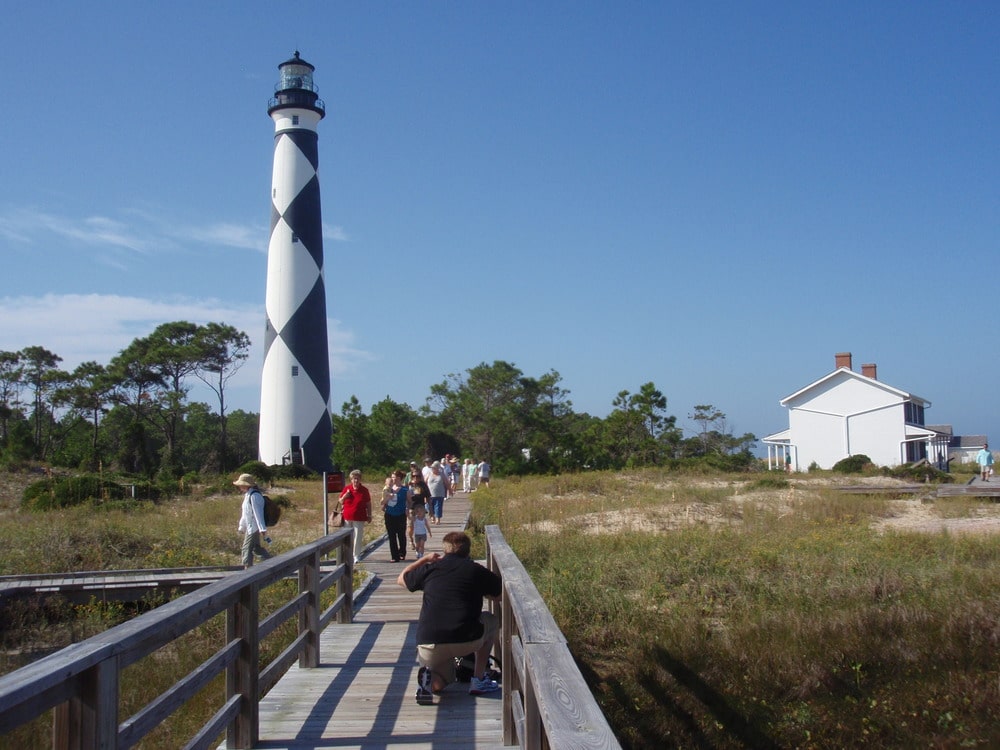
5. Carl Sandburg National Historic Site
Distance From Asheville: Forty-two minutes (31 miles) via I-26 E.
The Carl Sandburg National Historic Site is a National Historic Site located in Flat Rock, North Carolina. It is dedicated to preserving the life and legacy of Carl Sandburg, one of America’s most famous poets and writers.
Carl Sandburg was a Pulitzer Prize-winning poet, historian, and biographer who was best known for his works about the American people and their culture. He lived in Flat Rock for over 20 years, and the site is located on the property that was once his home.
The site consists of several buildings, including a restored farmhouse, barns, and other outbuildings that provide a glimpse into the daily life of Carl Sandburg and his family. Visitors can tour the home, which is furnished with period pieces and includes many of Sandburg’s personal belongings.
In addition to the home, the site also includes a visitor center with exhibits about Carl Sandburg’s life and work, as well as a museum store where visitors can purchase books, gifts, and other souvenirs. There are also several hiking trails in the area, and visitors can take guided tours of the site.

Top 10 National Parks Near Asheville
6. Great Smoky Mountains National Park
Distance From Asheville: 5 entrances to the Great Smoky Mountains National Park are within 70 miles from downtown Asheville.
My Favorite Resources: Map / Guidebook / MTJP Guide / Things to Do / Where to Stay
The Great Smoky Mountains National Park is a protected area that straddles the border between Tennessee and North Carolina in the United States.
The park is known for its stunning natural beauty and rich cultural history, and it has been a popular destination for visitors for over a century.
The idea of creating a national park in the Great Smoky Mountains region dates back to the early 1900s, when local residents and conservationists began advocating for the preservation of the area’s natural beauty.
In 1926, the federal government established the Great Smoky Mountains National Park Commission to study the feasibility of creating a park in the region.
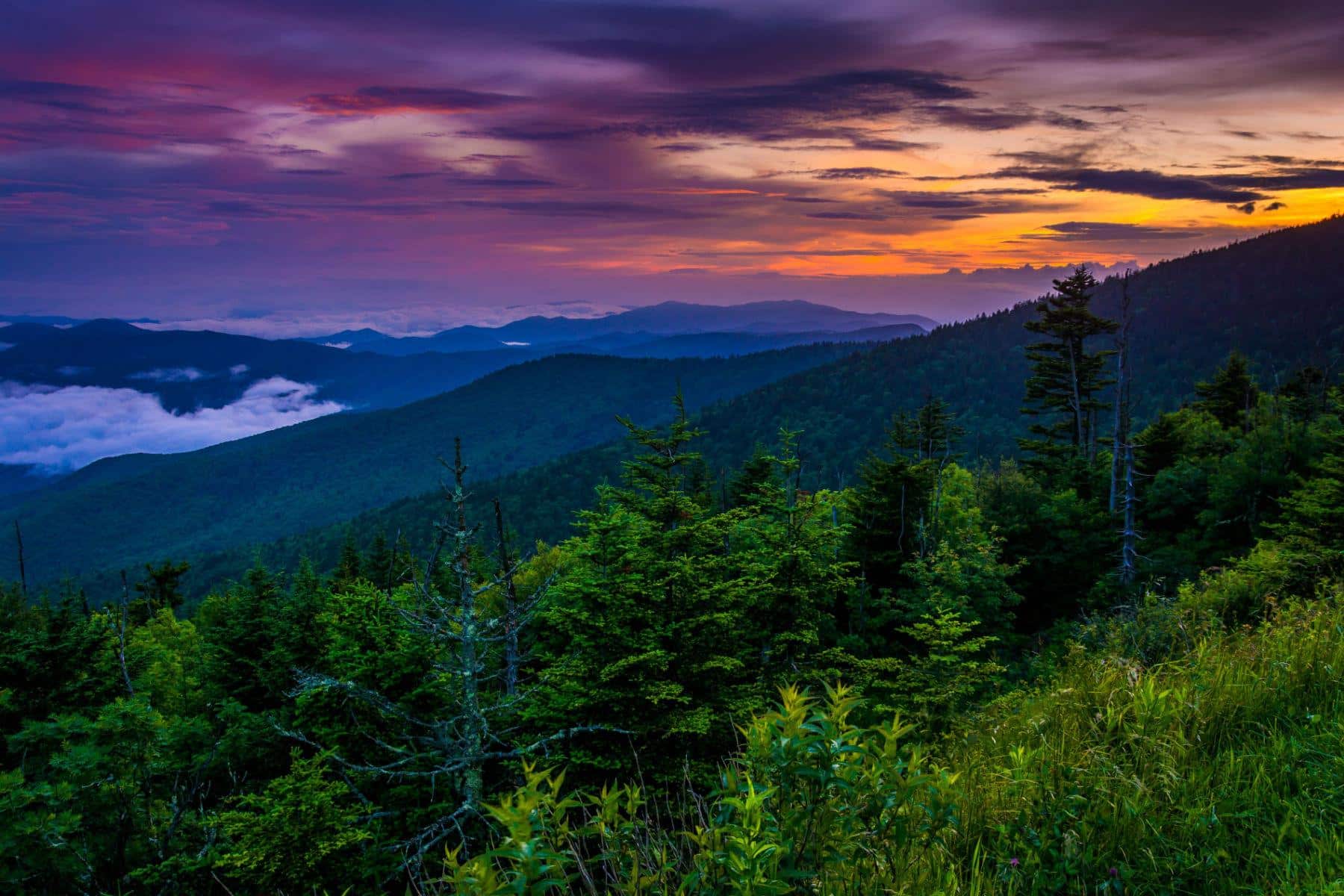
The First National Park Created In The Eastern United States
In 1934, President Franklin D. Roosevelt signed the legislation establishing the Great Smoky Mountains National Park, making it the first national park created in the eastern United States. The park covers over 800,000 acres, and it includes a diverse range of ecosystems, including dense forests, rolling hills, and high peaks.
Throughout its history, the Great Smoky Mountains National Park has been a destination for outdoor enthusiasts, with opportunities for hiking, camping, fishing, and wildlife viewing. The park is also home to a rich cultural history, including historic homesteads, rural communities, and the remnants of old moonshine stills.
Today, the Great Smoky Mountains National Park is one of the most visited national parks in the country, attracting millions of visitors each year. It continues to be a popular destination for those seeking to experience the beauty of the Appalachian Mountains and to explore the rich cultural heritage of the region.
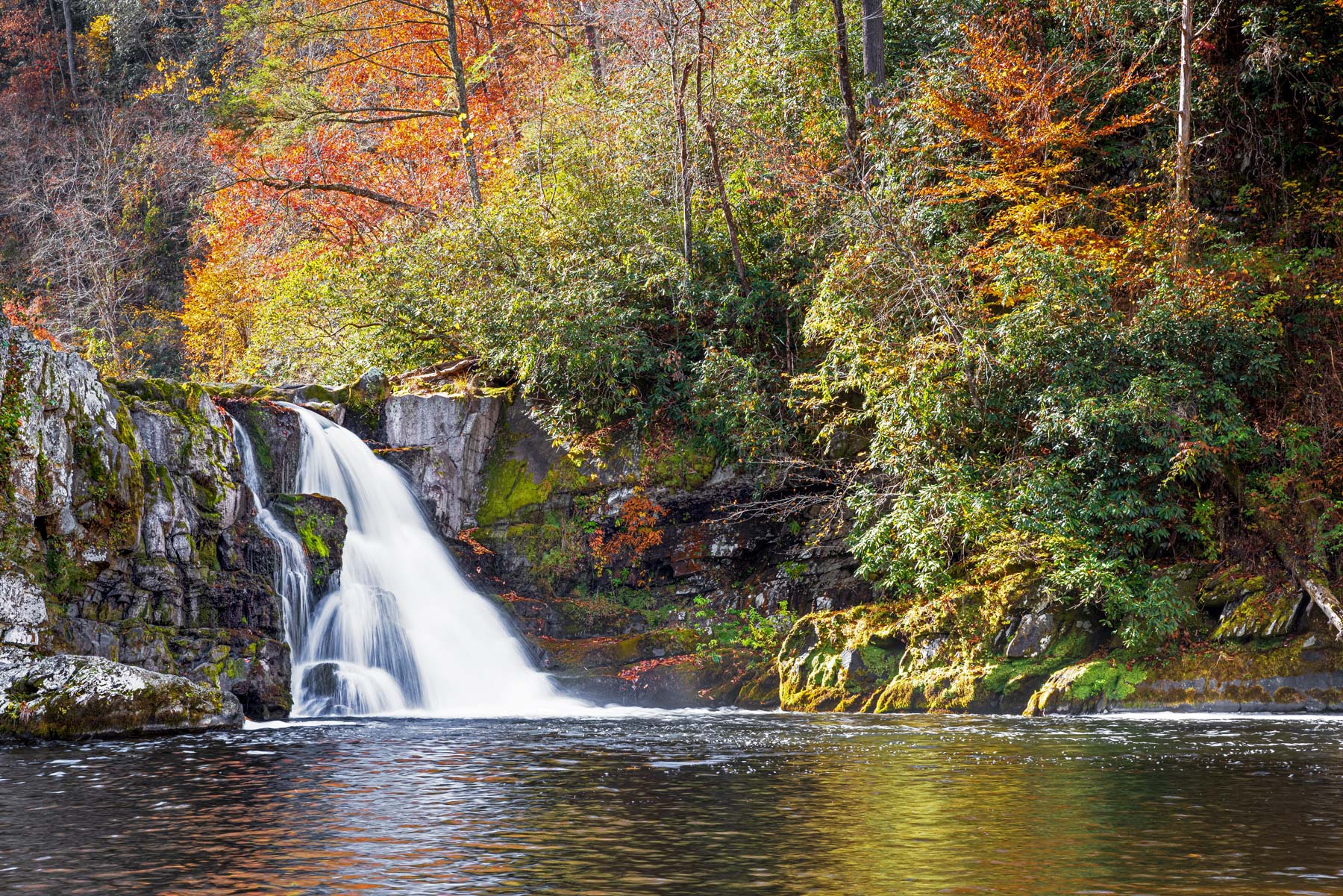
CHECK OUT: 15 AMAZING Facts About Great Smoky Mountains National Park
Things To Do At Great Smoky Mountains
The Great Smoky Mountains National Park offers a wide range of recreational opportunities for visitors, including:
- Hiking: With over 800 miles of trails, the park offers a variety of hiking opportunities, ranging from easy walks to strenuous backcountry treks. Visitors can explore scenic waterfalls, mountain summits, and remote backcountry areas.
- Wildlife viewing: The park is home to an abundance of wildlife, including black bears, elk, deer, and a variety of bird species. Visitors can observe wildlife from their cars or by hiking in the backcountry.
- Camping: The park offers several campgrounds for visitors, ranging from backcountry sites to more developed campgrounds with amenities like running water and electricity.
- Fishing: The park is home to several streams and rivers, where visitors can enjoy trout fishing. A valid fishing license is required.
- Picnicking: The park offers several picnic areas with scenic views, picnic tables, and grills for visitors to enjoy.
- Scenic drives: The park has several scenic roads, including the Newfound Gap Road, which offers stunning views of the surrounding mountains.
- Historic structures: The park is home to several historic structures, including log cabins, grist mills, and barns, which offer a glimpse into the region’s past.
- Winter sports: During the winter, the park offers opportunities for cross-country skiing, snowshoeing, and sledding.
These are just a few of the many activities available at the Great Smoky Mountains National Park. Whether you are looking for a leisurely stroll or a challenging hike, the park has something for everyone.
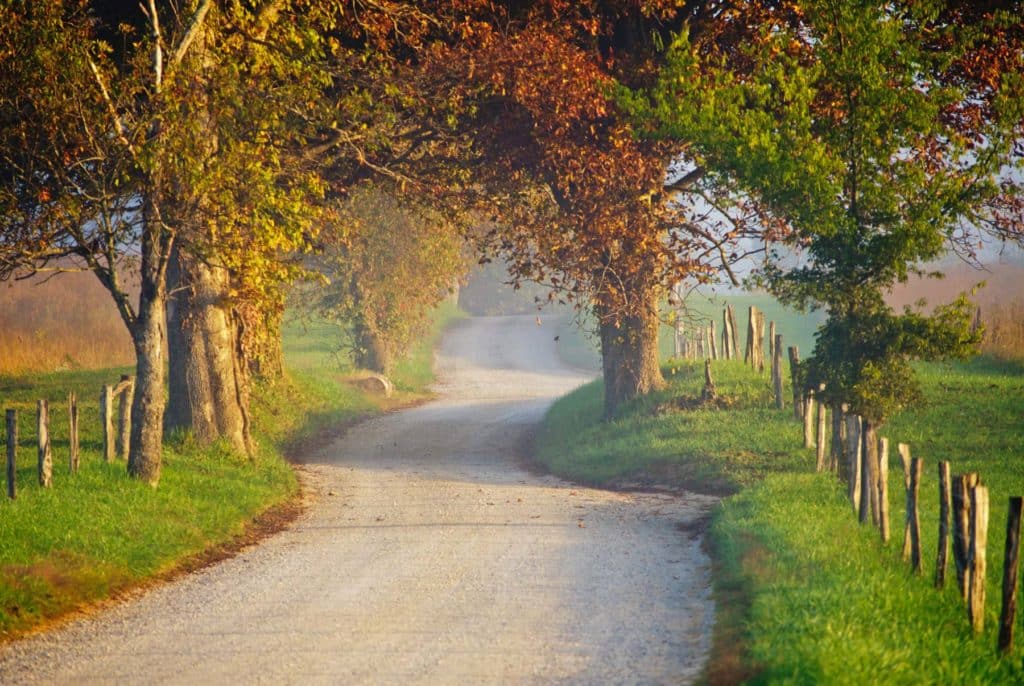
Check Out Our Amazing Film
If you’re wondering how crowded the park is considering it’s the most visited national park in the country – you might be surprised by the answer.
While it certainly depends on where you go in the park and what time of year you visit, Great Smoky Mountains doesn’t see anywhere near the crowding that parks like Zion or Yosemite do these days.
CHECK OUT: 15 AMAZING Facts About Great Smoky Mountains National Park
7. Guilford Courthouse National Military Park
Distance From Asheville: Two hours 36 minutes (172 miles) via I-40 E.
The Guilford Courthouse National Military Park was established in 1917 to commemorate the Battle of Guilford Courthouse, which was fought on March 15, 1781 during the American Revolution.
The Battle of Guilford Courthouse was a pivotal moment in the American Revolution, as it marked a turning point in the war in the southern colonies. American forces under the command of General Nathanael Greene engaged a larger British force led by General Cornwallis in a fierce battle that lasted several hours.
Although the American forces were ultimately defeated, they inflicted heavy losses on the British and forced them to withdraw from the area, which was a significant setback for the British war effort.
The Guilford Courthouse National Military Park was established to commemorate the battle and to preserve the site for future generations.
The park covers several hundred acres and includes monuments, markers, and interpretive exhibits that commemorate the events of the battle. Visitors can explore the battlefield on foot, taking guided tours or self-guided walks to learn about the battle and the events that led up to it.
In addition to its historical significance, the Guilford Courthouse National Military Park is also known for its beautiful setting and scenic views. The park includes several hiking trails, picnic areas, and outdoor exhibits, making it a popular destination for visitors who are interested in history, nature, and outdoor recreation.

CHECK OUT: 10 BEST Revolutionary War Sites In America
8. Moores Creek National Battlefield
Distance From Asheville: Approximately five hours (328 miles) via I-40 E.
Moores Creek National Battlefield preserves the location of the Battle of Moores Creek Bridge, which took place on February 27, 1776 during the American Revolutionary War.
The battle was a significant event in North Carolina’s history as it marked the defeat of a large Loyalist force by American Patriots, which helped secure independence for the state.
The battlefield site features a visitors center with exhibits and displays about the battle and the American Revolution, as well as a walking trail that follows the path of the Patriot and Loyalist forces.
The trail leads to the reconstructed Moores Creek Bridge, which played a key role in the battle and is now a symbol of the Patriot victory. The site also features a picnic area, a nature trail, and a small museum.
Moores Creek National Battlefield is a popular destination for history buffs, school groups, and families. The site is managed by the National Park Service and is open to the public year-round. Visitors can explore the battlefield, learn about the events that took place there, and reflect on the sacrifices and struggles of the American Revolution.

CHECK OUT: 10 BEST Revolutionary War Sites In America
9. Overmountain Victory National Historic Trail
Distance From Asheville: One hour 51 minutes (99 miles) via I-26 E & US-74 E.
The Overmountain Victory National Historic Trail is a 340-mile trail that traces the route taken by Patriot militia during the American Revolutionary War.
The trail begins in Abingdon, Virginia and follows the path of the Overmountain Men, a group of frontiersmen who marched from the mountains of present-day Tennessee, North Carolina, and Virginia to the Battle of Kings Mountain in South Carolina.
The Overmountain Men played a critical role in the Patriot victory at Kings Mountain, which was a turning point in the southern campaign of the Revolutionary War.
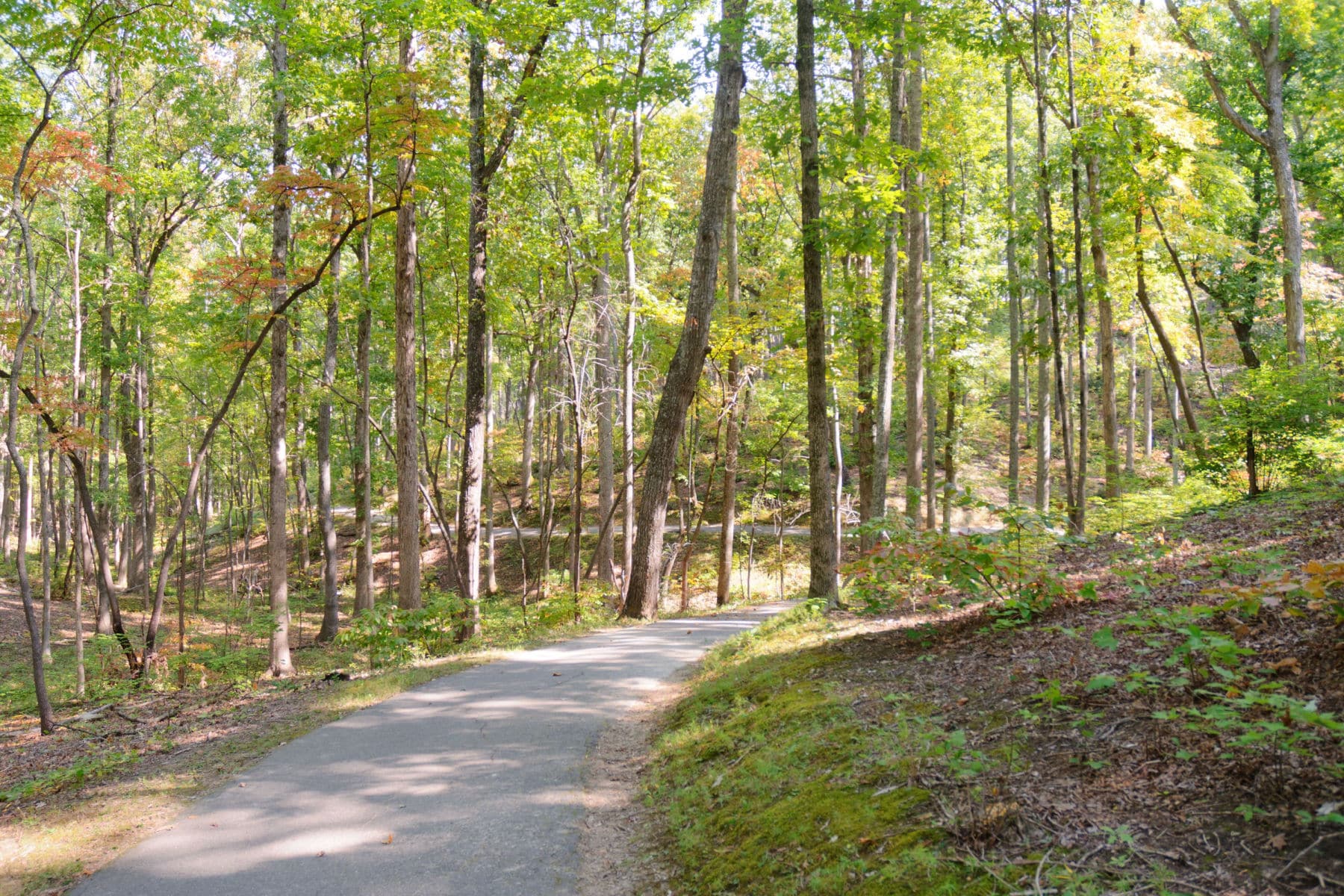
A Multi-Use Trail Open To Hikers, Bikers & Horseback Riders
The Overmountain Victory National Historic Trail is a multi-use trail that is open to hikers, horseback riders, and bicyclists. The trail passes through several states and offers visitors a unique opportunity to explore the natural beauty and history of the southern Appalachian Mountains.
Along the way, there are numerous interpretive signs and markers that provide information about the events of the Revolutionary War and the people who took part in them.
The trail is managed by the National Park Service, which works with local communities, organizations, and volunteers to maintain and preserve the trail and its associated historic sites.
Visitors can hike or bike the entire trail, or they can explore shorter sections that offer stunning views and historical insights.
Whether you’re an experienced hiker or simply interested in learning more about American history, the Overmountain Victory National Historic Trail is an unforgettable experience.
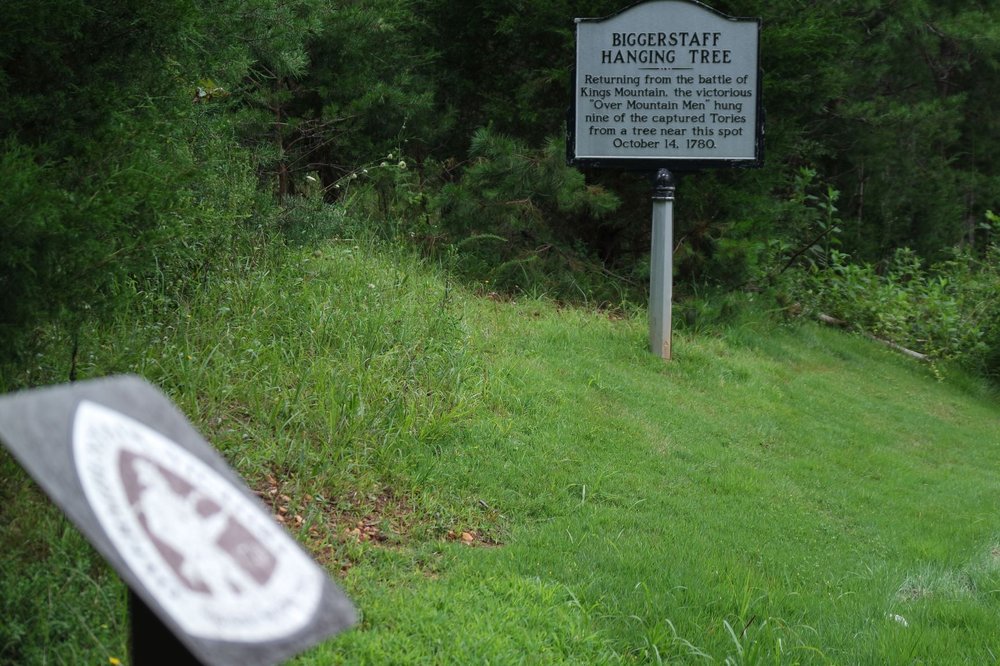
CHECK OUT: 10 BEST Revolutionary War Sites In America
10. Wright Brothers National Memorial

Distance From Asheville: Six hours 45 minutes (450 miles) via I-40 E & US-64 E.
It’s a full day’s drive from Asheville, but definitely worth the trip especially if you love the history of aviation.

Two Wrongs Don’t Make A Right, But Two Wrights Can Make One Amazing Airplane
The Wright Brothers, Orville and Wilbur, were aviation pioneers who achieved the first controlled, sustained, and powered flight of a heavier-than-air aircraft on December 17, 1903. Their achievement revolutionized the field of aviation and paved the way for modern air travel.
Prior to their successful flight at Kitty Hawk, North Carolina, the Wright Brothers spent years experimenting with gliders and studying the principles of aerodynamics. They built a wind tunnel to test their ideas, and developed a system of wing warping that allowed them to control the direction of flight.
On December 17, 1903, the Wright Brothers made four flights in their airplane, the Flyer. The first flight, piloted by Orville, lasted 12 seconds and covered a distance of 120 feet. The fourth and final flight, piloted by Wilbur, lasted 59 seconds and covered a distance of 852 feet.
The Wright Brothers continued to refine their airplane design and made several more historic flights over the next few years. They also established the Wright Company to manufacture and sell their airplanes, and continued to experiment with new technologies and techniques.
Today, the Wright Brothers are remembered as aviation pioneers and their achievements are celebrated around the world. The Wright Brothers National Memorial in Kitty Hawk, North Carolina, commemorates their historic flight and serves as a reminder of their enduring legacy.

About The Memorial
The Wright Brothers National Memorial is a historic site located in Kill Devil Hills, North Carolina, that commemorates the first successful powered flight by Orville and Wilbur Wright on December 17, 1903.
Here are some key features of the memorial:
- The First Flight Boulder: This granite boulder marks the spot where the Wright Brothers made their first successful powered flight on December 17, 1903. The boulder is inscribed with the words “In commemoration of the conquest of the air by the brothers Wilbur and Orville Wright, conceived by genius, achieved by dauntless resolution and unconquerable faith.”
- The Wright Brothers Visitor Center: This modern facility includes exhibits, artifacts, and interactive displays that tell the story of the Wright Brothers and their historic flight. Visitors can learn about the brothers’ lives, their experimentation with gliders, and the development of their first powered airplane.
- The Flight Line: This is the area where the Wright Brothers made their historic flights. Visitors can walk along the flight line and see markers that indicate the distances traveled by the Wright Brothers during their flights.
- The Wright Brothers Memorial: This 60-foot-tall granite monument stands atop Kill Devil Hill, which was the site of the Wright Brothers’ glider experiments. Visitors can climb the monument’s stairs for a panoramic view of the surrounding area.
- The Centennial Pavilion: This open-air pavilion was constructed in 2003 to commemorate the centennial of the Wright Brothers’ first flight. It includes exhibits and displays that highlight the impact of the Wright Brothers’ achievement on aviation and the world.
- Ranger-led programs: The park offers a variety of ranger-led programs, including talks, walks, and demonstrations, that provide visitors with a deeper understanding of the Wright Brothers’ lives and achievements.
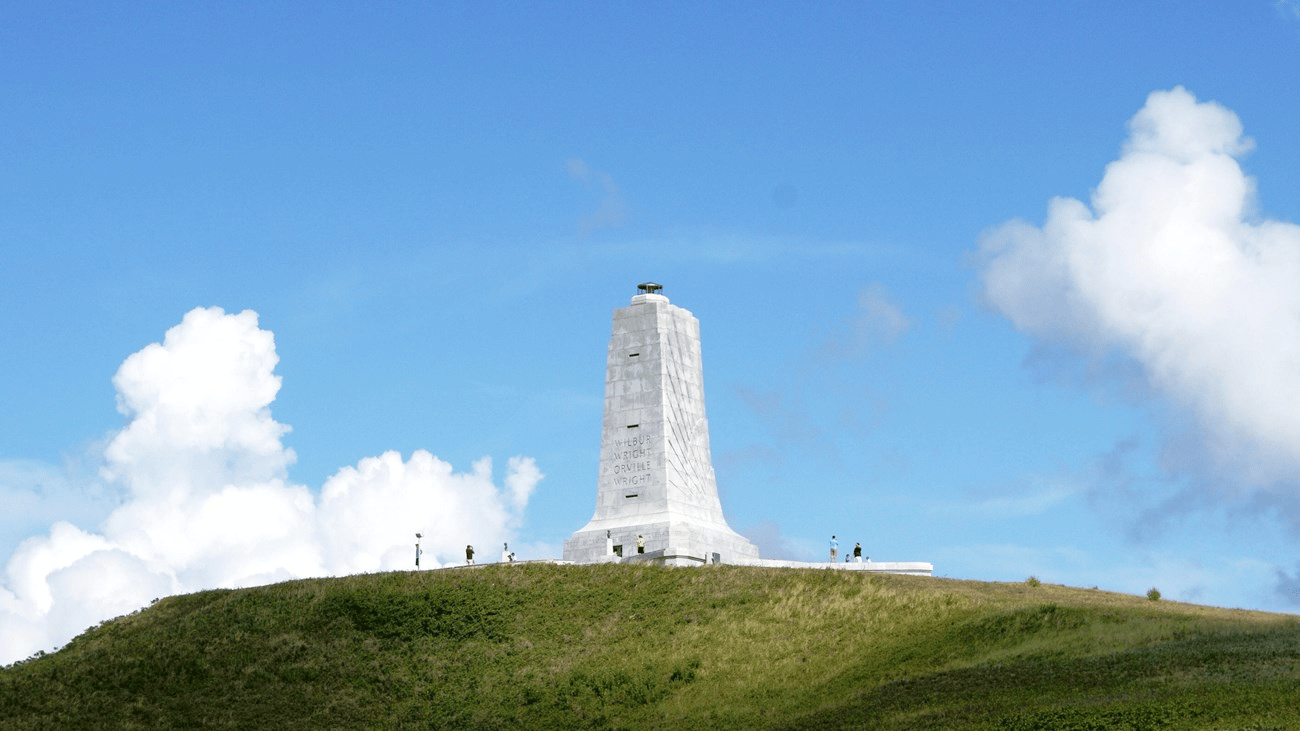
National Parks Near Asheville FAQ
Great Smoky Mountains National Park near Asheville includes everything from incredible natural beauty to the ease of access to the region’s best hiking trails, from the powerful waterfalls to the stunning scenic drives.
Nestled in North Carolina’s southern Blue Ridge Mountains, Asheville and its neighboring foothills towns exude quirky charm and character.
Why Trust Us About National Parks Near Asheville?
We’re Jim Pattiz and Will Pattiz, collectively known as the Pattiz Brothers (and sometimes the Parks Brothers) and we absolutely LOVE the national parks.
You should probably know that we don’t just make this stuff up out of thin air. We’ve spent our entire adult lives exploring and filming America’s national parks and public lands.
We’ve worked with the National Park Service, the Department of Interior, USDA, and the U.S. Forest Service for years creating films on important places and issues. Our work has been featured in leading publications all over the world and even some people outside of our immediate family call us experts on the national parks.
Meet The Parks Brothers
Map Of National Parks Near Asheville
List Of National Park Sites Near Asheville
- Appalachian National Scenic Trail
- Blue Ridge Parkway
- Cape Hatteras National Seashore
- Cape Lookout National Seashore
- Carl Sandburg Home National Historic Site
- Great Smoky Mountains National Park
- Guilford Courthouse National Military Park
- Moores Creek National Battlefield
- Overmountain Victory National Historic Trail
- Wright Brothers National Memorial
We Hope You’ll Follow Our Journey

Our goal here at More Than Just Parks is to share the beauty of America’s national parks and public lands through stunning short films in an effort to get Americans and the world to see the true value in land conservation.
We hope you’ll follow our journey through the parks and help us to keep them the incredible places that they are. If you’re interested in joining the adventure then please sign up below!
national parks near asheville, asheville national parks, national parks near asheville, asheville national parks, national parks near asheville, asheville national parks, national parks near asheville, asheville national parks, national parks near asheville, asheville national parks, national parks near asheville, asheville national parks, national parks near asheville, asheville national parks, national parks near asheville, asheville national parks,
national parks near asheville, asheville national parks, national parks near asheville, asheville national parks, national parks near asheville, asheville national parks, national parks near asheville, asheville national parks, national parks near asheville, asheville national parks, national parks near asheville, asheville national parks, national parks near asheville, asheville national parks, national parks near asheville, asheville national parks,





Leave a Reply